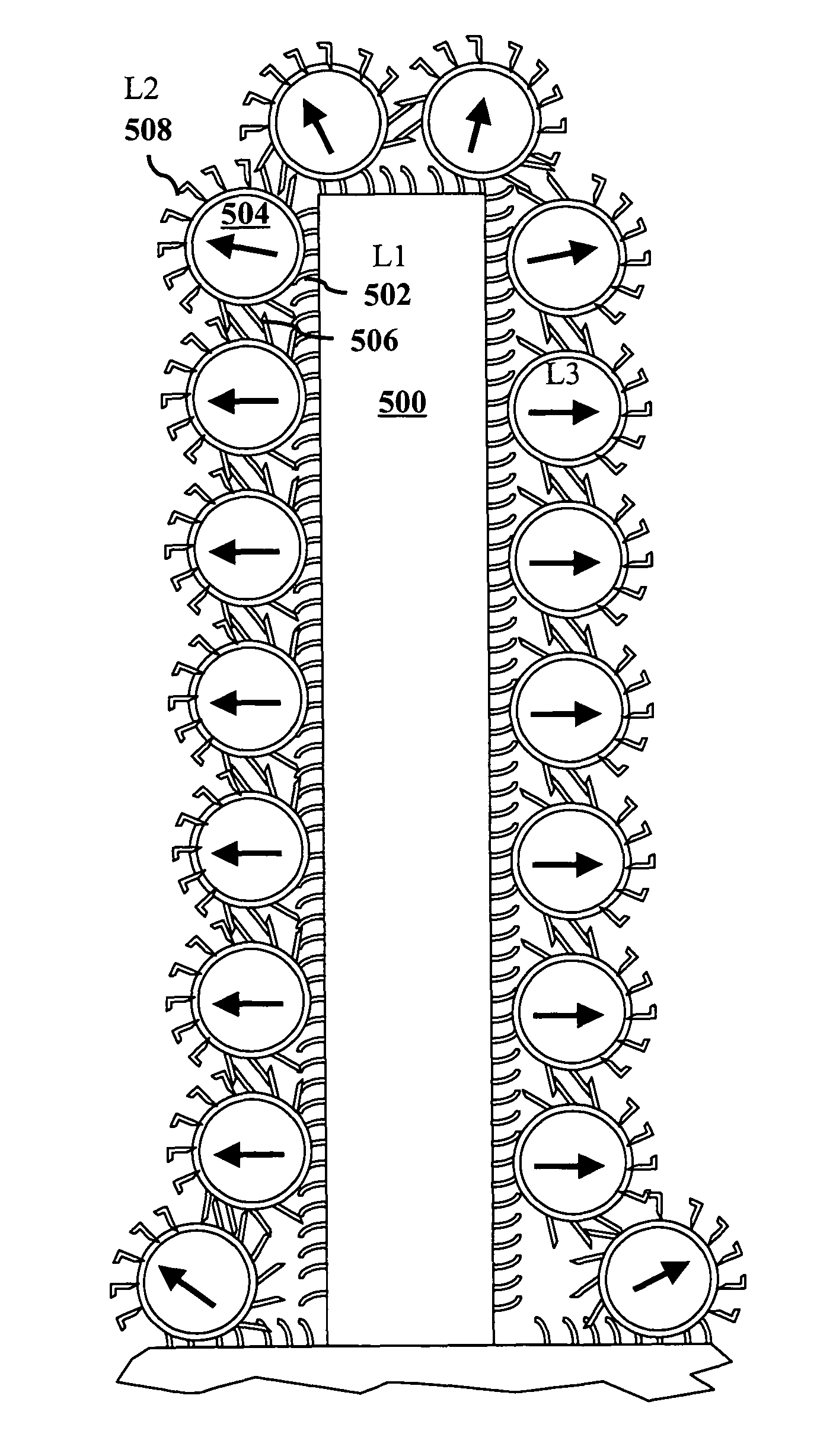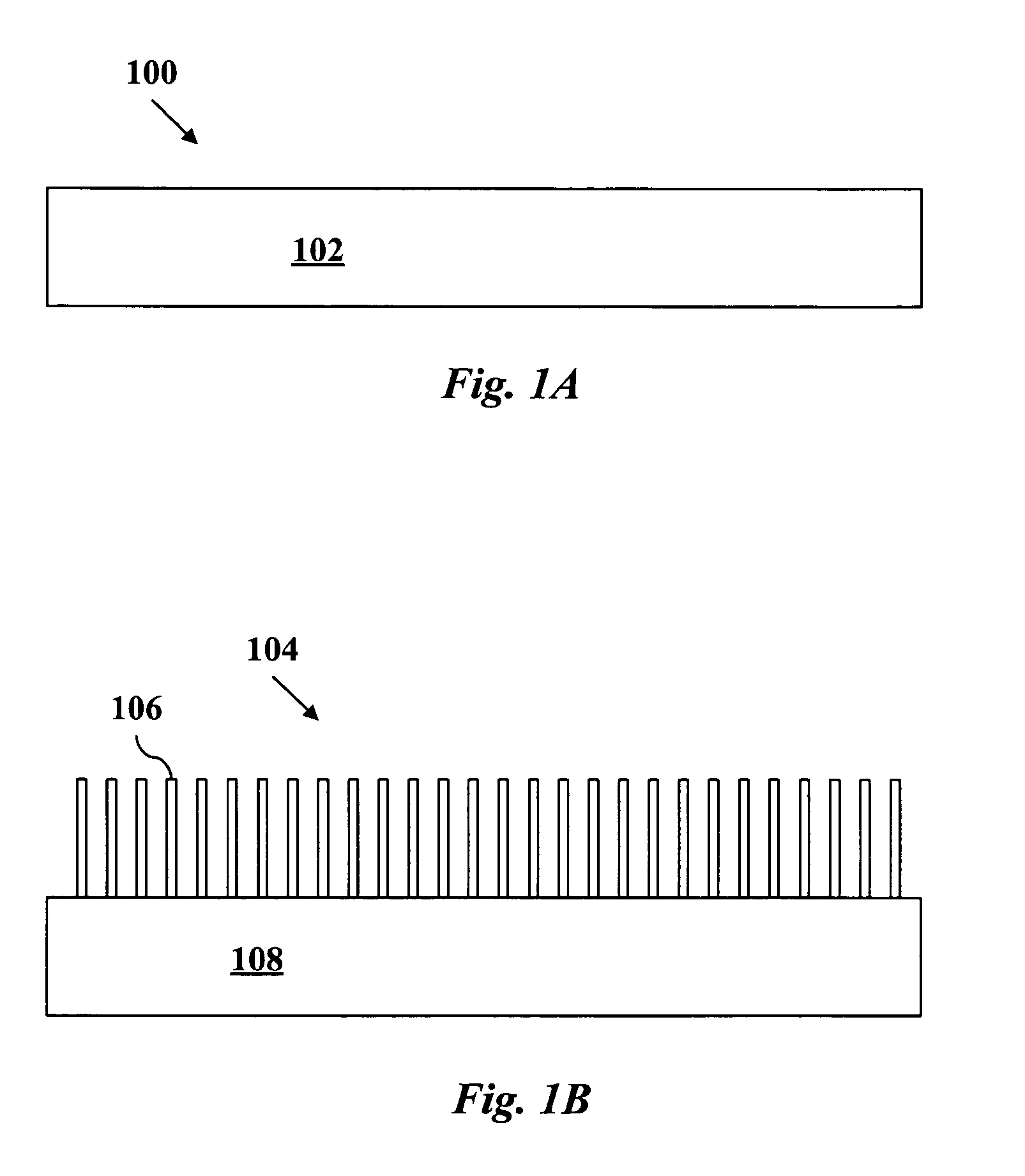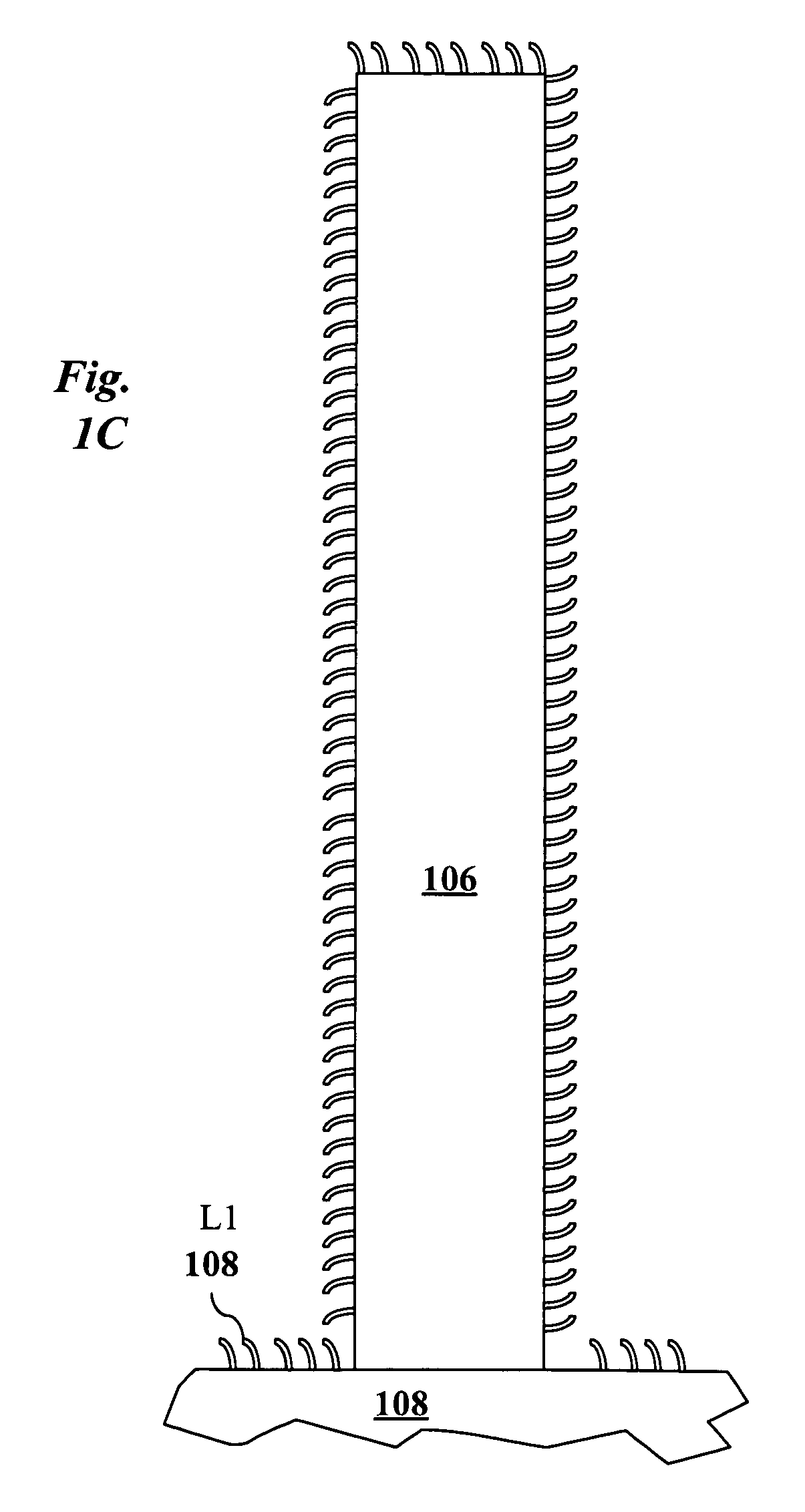Photovoltaic devices having nanoparticle dipoles for enhanced performance and methods for making same
a technology of photovoltaic devices and dipoles, which is applied in the direction of nanotechnology, semiconductor devices, electrical devices, etc., can solve the problems of difficult to create a non-uniform distribution of ligands on the surface of nanoparticles, and achieve enhanced photovoltaic effects, increased time, and enhanced photovoltaic effects
- Summary
- Abstract
- Description
- Claims
- Application Information
AI Technical Summary
Benefits of technology
Problems solved by technology
Method used
Image
Examples
Embodiment Construction
[0022]According to a preferred embodiment of the invention, a photovoltaic device is made by a collection of steps which will be described now in relation to the figures. In one step, a conductive substrate is surface functionalized with bifunctional ligands of a first type. In one embodiment, as shown in FIG. 1A, the conductive substrate 100 is a transparent conductive oxide substrate 102 such as TiO2. In a preferred embodiment, shown in FIG. 1B, the conductive substrate 104 is produced in a prior step by synthesizing metal oxide nanorods 106 on a transparent conductive oxide substrate 108.
[0023]FIG. 1C illustrates a detail view of a surface functionalized nanorod 106 synthesized on transparent oxide substrate 108. The surface is functionalized with ligands 108 of the first type. Ligands 108 are may be, for example, ligands of the type shown in FIG. 2A, 2B, or 2C. In these figures, R represents an alkyl (C1-C6), an aromatic group (i.e., para-substituted phenyl group), or nothing. I...
PUM
| Property | Measurement | Unit |
|---|---|---|
| temperature | aaaaa | aaaaa |
| conductive | aaaaa | aaaaa |
| electric field | aaaaa | aaaaa |
Abstract
Description
Claims
Application Information
 Login to View More
Login to View More - R&D
- Intellectual Property
- Life Sciences
- Materials
- Tech Scout
- Unparalleled Data Quality
- Higher Quality Content
- 60% Fewer Hallucinations
Browse by: Latest US Patents, China's latest patents, Technical Efficacy Thesaurus, Application Domain, Technology Topic, Popular Technical Reports.
© 2025 PatSnap. All rights reserved.Legal|Privacy policy|Modern Slavery Act Transparency Statement|Sitemap|About US| Contact US: help@patsnap.com



